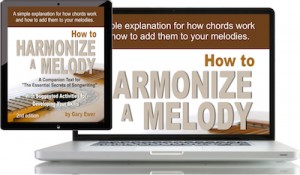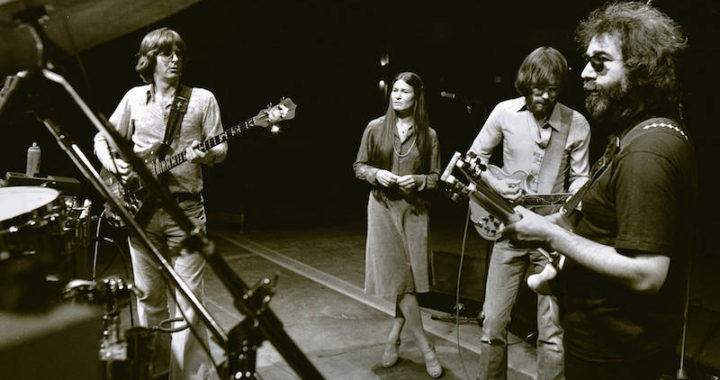Since the vast majority of songs (probably 98% or more) that make it to the charts in any genre use a time signature of 4/4, we can surmise that producers think that that most common of time signatures is part of a winning formula.
Most of the time professional producers get these things right, but that’s certainly not to say that there’s no room for experimentation when it comes to the choice of what we call a song’s meter.
 “The Essential Secrets of Songwriting 10-eBook Bundle” covers every aspect of how to write great songs. Contains a Study Guide that keeps you focused on becoming a consistently better songwriter. Get today’s FREE DEAL when you make your purchase. Click below for details.
“The Essential Secrets of Songwriting 10-eBook Bundle” covers every aspect of how to write great songs. Contains a Study Guide that keeps you focused on becoming a consistently better songwriter. Get today’s FREE DEAL when you make your purchase. Click below for details.
A 4/4 time signature, also called common time, simply means that the music has been organized to alternate in a strong beat-weak beat fashion. It’s a long time between hit songs before you’ll hear anything that happens in a different time signature.
Certainly in the older blues songs, 6/8 or 12/8 time was relatively common. Try this: Listen to Ella Fitzgerald singing “St. Louis Blues”, and you’ll see that 12/8 feels quite natural when you chant “one-and-a two-and-a three-and-a four-and-a” along with Ella’s singing. In essence, though, 12/8 a 4/4 time signature with triplet subdivisions of the beat.
Choosing a different time signature often has a strong impact on the basic feel of a song, and that’s shy experimenting with meter can be so valuable.
Bob Dylan’s “The Times They Are a-Changin'” is in 3/4 time, but this is where the whole time signature thing can get a bit muddy. Sure, it sounds like 3/4 (STRONG-weak-weak), but if you count the same pattern that you used while listening to “St. Louis Blues” (“one-and-a two-and-a three-and-a four-and-a…”), you’ll see that that works also. You could transcribe the Dylan song in 12/8.
But that’s getting a little off-topic here. All I mean to do with this post is to convince you that there are other time signatures to try other than the basic common time 4/4. There’s a comprehensive Wikipedia article, “List of musical works in unusual time signatures,” that lists hundreds of songs, so it doesn’t make a lot of sense for me to try to create my own list. But you may want to check these ones out:
- 3/4 time: Lucy in the Sky With Diamonds (the verse)
- 5/4 time: 15 Step (Radiohead) If you find the beat hard to pick up with this one, listen to the chorus-like section at 1’15” – It’s a bit easier to pick it up in that section.
- 5/4 time: Everything’s Alright (Andrew Lloyd Webber) from Jesus Christ Superstar
- 7/4 time: Lazy Lightning (Grateful Dead). This live version includes a count-in which makes it easier to pick up the time signature.
Have you experimented with odd time signatures? Feel free to comment, and leave a link to your song so we can all have a listen.
 Written by Gary Ewer. Follow on Twitter.
Written by Gary Ewer. Follow on Twitter.
 Have a great melody, but stuck at the “how to add chords to it” stage? “How To Harmonize a Melody” shows you, step-by-step and with sound samples, how it’s done, with suggestions for chord substitutions that might work as well. It’s part of “The Essential Secrets of Songwriting” 10-eBook Bundle.
Have a great melody, but stuck at the “how to add chords to it” stage? “How To Harmonize a Melody” shows you, step-by-step and with sound samples, how it’s done, with suggestions for chord substitutions that might work as well. It’s part of “The Essential Secrets of Songwriting” 10-eBook Bundle.











Pingback: Keep Looking: Second Ideas are Often Better Than First Ones | The Essential Secrets of Songwriting
More 5/4 greats:
“How the Heart Approaches What It Yearns: https://www.youtube.com/watch?v=HD409HP-4h8
“Take Five”: https://www.youtube.com/watch?v=vmDDOFXSgAs
I thought I had posted a comment already but it does not appear to have worked so please remove this one if that one comes through.
This is a great article. I generally try to avoid working in 4/4 as I find it boring, even though most of the music I enjoy is in 4/4. Making my own music in 4/4 just does not do it for me.
I made this, in 5/8: https://www.youtube.com/watch?v=pCi-IZe5BaQ
However, I arranged the drums in an almost half-time style, so initially it sounds like an average 4/4, until you realise that that does not fit. If you count a faster 5/8, that fits, with the first snare of each bar falling on the 3rd 8th. So there is another technique for experimenting with odd time signatures: set the initial time signature, and then arrange the rhythm component in yet another way, half-time for instance.
Thank you for another great article, encouraging people to experiment with something simple to achieve something interesting!
Thanks Rikki- I’m on the road right now, and I hope I didn’t do something to remove your first post. Thanks for your comment – Really great piece. And great advice for further manipulating a time signature.
Thanks again!
Gary
Cheers Gary.
A good way to change up rhythms in your head is to use karaoke tracks in different meters and write or top line as the groove plays. It’s fun. Also useful for hearing different chord progressions as well
Thanks Marty- Great suggestion!
G